The Cockroach Approach: Bombing Our Own Failed Narrative
Aidan Morrison is a graduate of the Australian National
University with Honours in Physics. He broke of his
PhD studies in Experimental Particle Physics, to study
force structure theory with a focus on swarming tactics
and distributed off-board systems, which resulted in him
founding Rubber Ducky Defence.
University with Honours in Physics. He broke of his
PhD studies in Experimental Particle Physics, to study
force structure theory with a focus on swarming tactics
and distributed off-board systems, which resulted in him
founding Rubber Ducky Defence.
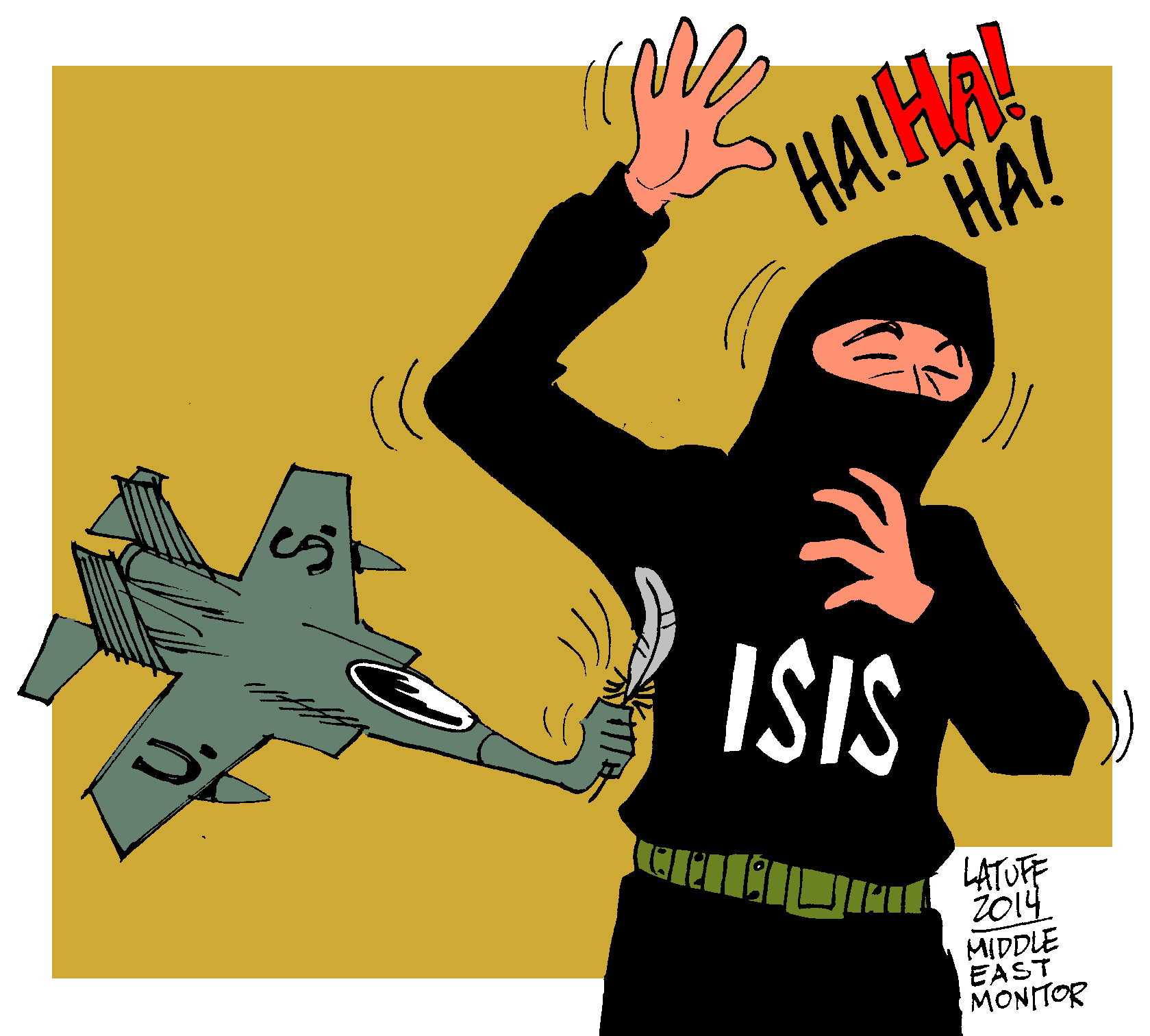
A couple of
weeks ago
Jason Logue
outlined what
he argued
might be a
better narrative for Australia and America’s
current effort
against the
Islamic State
(IS). Prior to
the fall of
Ramadi and
Palmyra his
argument that
our bombing campaign was providing enough space and time
for our local allies (the Iraqi army) to gain strength and
eventually defeat IS was more plausible. Much has changed.
Peter Hartcher points out how pathetic our bombing victories
now look compared to IS territorial conquests. The narrative
about holding IS at bay until local forces regain legitimacy
and strength enough to destroy it is starting to look fanciful.
weeks ago
Jason Logue
outlined what
he argued
might be a
better narrative for Australia and America’s
current effort
against the
Islamic State
(IS). Prior to
the fall of
Ramadi and
Palmyra his
argument that
our bombing campaign was providing enough space and time
for our local allies (the Iraqi army) to gain strength and
eventually defeat IS was more plausible. Much has changed.
Peter Hartcher points out how pathetic our bombing victories
now look compared to IS territorial conquests. The narrative
about holding IS at bay until local forces regain legitimacy
and strength enough to destroy it is starting to look fanciful.
So what’s the narrative that we’re left with? I would argue
we lack one, and the effort of finding one might be a good
framework for re-assessing current policy, with a view to
changing it. According to Jason’s useful definition, a
narrative “describes the current state, what the proposed
future state will look like, and justifies the action needed
to get there.” He also acknowledges that having a truly
convincing narrative, and one that is more credible and
persuasive than your enemy’s, (potentially directly
disparaging your enemy’s) is important to both winning
support domestically, encouraging allies, and breaking
your opponents will to fight.
we lack one, and the effort of finding one might be a good
framework for re-assessing current policy, with a view to
changing it. According to Jason’s useful definition, a
narrative “describes the current state, what the proposed
future state will look like, and justifies the action needed
to get there.” He also acknowledges that having a truly
convincing narrative, and one that is more credible and
persuasive than your enemy’s, (potentially directly
disparaging your enemy’s) is important to both winning
support domestically, encouraging allies, and breaking
your opponents will to fight.
For the sake of contributing to that process with a
‘team-red’ approach let me describe a cynical alternative
summary to our present rationale for fighting terrorists
and Islamic State members with an air campaign. I call
it the ‘cockroach approach’:
‘team-red’ approach let me describe a cynical alternative
summary to our present rationale for fighting terrorists
and Islamic State members with an air campaign. I call
it the ‘cockroach approach’:
If you see
one, squash
it. (Bomb it.)
Or at least
try. At worst
you’ll miss
and it will
scurry out
of sight.
Though
perfectly
revolting,
they’re not
really that dangerous. Unless really drastic action is taken,
they’ll probably always be a few around, but mostly in
places and at times where can’t see or reach them. And
when one does show its disgusting self in the open for
more than a moment, at least we get the satisfaction of
squashing (bombing) one to compensate us for the
displeasure of having seen it. Hopefully there’ll never be
too many more than that. Since more ghastly appearances
will also lead to more satisfying squashings (bombings),
there seems a fair chance the tolerable if unpleasant
equilibrium will be maintained.
one, squash
it. (Bomb it.)
Or at least
try. At worst
you’ll miss
and it will
scurry out
of sight.
Though
perfectly
revolting,
they’re not
really that dangerous. Unless really drastic action is taken,
they’ll probably always be a few around, but mostly in
places and at times where can’t see or reach them. And
when one does show its disgusting self in the open for
more than a moment, at least we get the satisfaction of
squashing (bombing) one to compensate us for the
displeasure of having seen it. Hopefully there’ll never be
too many more than that. Since more ghastly appearances
will also lead to more satisfying squashings (bombings),
there seems a fair chance the tolerable if unpleasant
equilibrium will be maintained.
No matter how many fighting positions
or vehicles you destroy, without a land
force to hold the gains, terrorists can
scurry away, and scurry back again in
the future.
There are
several
characteristics
of our
current
struggle
against IS
that this
comic
description
captures quite
well. In
particular,
the fact that
air bombing
campaigns in the absence of a motivated and coordinated
ground force are fundamentally opportunistic rather than
systematic. No matter how many fighting positions or
vehicles you destroy, without a land force to hold the gains,
terrorists can scurry away, and scurry back again in the
future.
several
characteristics
of our
current
struggle
against IS
that this
comic
description
captures quite
well. In
particular,
the fact that
air bombing
campaigns in the absence of a motivated and coordinated
ground force are fundamentally opportunistic rather than
systematic. No matter how many fighting positions or
vehicles you destroy, without a land force to hold the gains,
terrorists can scurry away, and scurry back again in the
future.
The magnitude of damage inflicted is also brought into
focus by this analogy. Just under 600 IS vehicles were
targeted in the first hundred days of the campaign. Even
fewer are being hit presently. At best this imposes a daily
toll of perhaps six vehicles a day. If Australia had the
population of Iraq and Syria combined, we’d expect at
least this sort of road toll every long-weekend. A
spointed out by David Kilcullen, this strike-rate is dwarfed
by campaigns in Afghanistan or Kosovo. If Australia could
survive Easter every day, IS could probably survive an
indefinite coalition air campaign.
focus by this analogy. Just under 600 IS vehicles were
targeted in the first hundred days of the campaign. Even
fewer are being hit presently. At best this imposes a daily
toll of perhaps six vehicles a day. If Australia had the
population of Iraq and Syria combined, we’d expect at
least this sort of road toll every long-weekend. A
spointed out by David Kilcullen, this strike-rate is dwarfed
by campaigns in Afghanistan or Kosovo. If Australia could
survive Easter every day, IS could probably survive an
indefinite coalition air campaign.
The cockroach approach highlights that
this motivation for continuing operations
is morally as well as strategically dubious.
The cockroach approach also describes a system where the
means is the end in itself. Each action is individually
satisfying because it expresses our disgust and opposition
to something we greatly dislike, not because it brings us
closer to a better situation. This really fails the definition
of what a narrative is, or should be. News stories delightfully
depict the success of individual strikes, meanwhile serious
commentators voice sobering assessments that IS could
prevail despite our efforts. The cockroach approach
highlights that this motivation for continuing operations
is morally as well as strategically dubious.
means is the end in itself. Each action is individually
satisfying because it expresses our disgust and opposition
to something we greatly dislike, not because it brings us
closer to a better situation. This really fails the definition
of what a narrative is, or should be. News stories delightfully
depict the success of individual strikes, meanwhile serious
commentators voice sobering assessments that IS could
prevail despite our efforts. The cockroach approach
highlights that this motivation for continuing operations
is morally as well as strategically dubious.
Examining where the cockroach approach breaks down
also provides a useful point of departure from current policy. In particular, the assumption that Islamic State is ‘not really that dangerous’,
is worthy of discussion. It appears at the moment that
western leaders aren’t sure about this. At present the
possibility of returning foreign fighters committing terrorist
acts back home seems to have dominated perceptions
of the risk. Apart from that, it’s not perfectly clear how an
overzealous theocracy taking over parts of Syria and Iraq
actually affects life very negatively here in Australia.
Peter Leahy puts itsuccinctly: “With no clear indication
of how to achieve victory or what peace in the Middle
East looks like, a strong option is to abstain.”
also provides a useful point of departure from current policy. In particular, the assumption that Islamic State is ‘not really that dangerous’,
is worthy of discussion. It appears at the moment that
western leaders aren’t sure about this. At present the
possibility of returning foreign fighters committing terrorist
acts back home seems to have dominated perceptions
of the risk. Apart from that, it’s not perfectly clear how an
overzealous theocracy taking over parts of Syria and Iraq
actually affects life very negatively here in Australia.
Peter Leahy puts itsuccinctly: “With no clear indication
of how to achieve victory or what peace in the Middle
East looks like, a strong option is to abstain.”
Is it possible that IS might expand
enough to acquire naval capabilities
in the Gulf or Mediterranean, or
acquire chemical weapons expertise?
On the other
hand, certain
visions of a
non-peaceful
Middle East
might look
very nasty
indeed.
Kilcullen is
describing
the Shia-
Sunni divide
as a cold war
that IS is turning hot, with the potential to go nuclear.
That sounds more frightening, and should jolt some more
thorough exploration of future scenarios. Is it possible
that IS might expand enough to acquire naval capabilities
in the Gulf or Mediterranean, or acquire chemical weapons
expertise? What happens if Iran makes a unilateral
intervention into Iraq to stop the Islamic State, or IS makes
further gains destabilising Saudi Arabia?
hand, certain
visions of a
non-peaceful
Middle East
might look
very nasty
indeed.
Kilcullen is
describing
the Shia-
Sunni divide
as a cold war
that IS is turning hot, with the potential to go nuclear.
That sounds more frightening, and should jolt some more
thorough exploration of future scenarios. Is it possible
that IS might expand enough to acquire naval capabilities
in the Gulf or Mediterranean, or acquire chemical weapons
expertise? What happens if Iran makes a unilateral
intervention into Iraq to stop the Islamic State, or IS makes
further gains destabilising Saudi Arabia?
It’s quite possible that none of these scenarios come to pass.
But neither does it seem safe to rule them out. If it looks
like we could be progressing towards them, it’s possible
that a more substantial ground-based intervention could be
required to avert disaster, even if a truly peaceful Middle
East is never achieved. Waiting to see may be wise, but
waiting too long could also backfire. The present policy
predicament is what to do in the time being. Maybe the
cockroach approach actually is a suitable interim position,
at least until it becomes clear how dangerous IS really is?
But neither does it seem safe to rule them out. If it looks
like we could be progressing towards them, it’s possible
that a more substantial ground-based intervention could be
required to avert disaster, even if a truly peaceful Middle
East is never achieved. Waiting to see may be wise, but
waiting too long could also backfire. The present policy
predicament is what to do in the time being. Maybe the
cockroach approach actually is a suitable interim position,
at least until it becomes clear how dangerous IS really is?
I would argue against this for two reasons. The first is using fast jets to bomb terrorists isn’t as cheap as squashing cockroaches. The US has already spent over $2 billion. If this outlay hasn’t produced the results intended, it might be best saved in a war-chest for a future outlay which might.
The second is that terrorists aren’t devoid of intelligence, strategy and ambition in the same way that cockroaches are. There’s strong evidence that they’re actually learning to adapt very quickly. This will probably blunt the impact of our air-power advantage should we come to need it in a more major intervention. It’s also easy to forget the role of ideology and world-view in motivating a fighting force. In an insightful article in the Atlantic Graeme Wood outlines their theocratic, apocalyptic vision for their Caliphate. Far from undermining legitimacy, a tepid bombing campaign might even fortify their claim to be the one true Caliphate, bravely fighting the ‘Armies of Rome’ as prophesied.
[Bombing] ..masks the ugly truth that some combination of ambivalence and impotence has left our leaders without clear or viable strategy.
Overall, a new narrative is required. Fighting a fight with a level of effort that is clearly short of that required to achieve a meaningful victory is futile. If victory isn’t required, or possible, we should withdraw. If the cost of failure is genuinely terrible, we should fight to win. Currently air campaigns might be a low-risk means of violently expressing our contempt for IS and all it stands for; but this masks the ugly truth that some combination of ambivalence and impotence has left our leaders without clear or viable strategy. The residual narrative that justifies our involvement can be readily disparaged as the ‘cockroach approach,’ which gives no comfort to our allies, and plenty of encouragement to our enemy. A new policy will have to accompany a new narrative if it’s to be any more credible.The Cockroach Approach: Bombing Our Own Failed Narrative
Aidan Morrison is a graduate of the Australian National University with Honours in Physics. He broke of his PhD studies in Experimental Particle Physics, to study force structure theory with a focus on swarming tactics and distributed off-board systems, which resulted in him founding Rubber Ducky Defence.

A couple of weeks ago Jason Logue outlined what he argued might be a better narrative for Australia and America’s current effort against the Islamic State (IS). Prior to the fall of Ramadi and Palmyra his argument that our bombing campaign was providing enough space and time for our local allies (the Iraqi army) to gain strength and eventually defeat IS was more plausible. Much has changed. Peter Hartcher points out how pathetic our bombing victories now look compared to IS territorial conquests. The narrative about holding IS at bay until local forces regain legitimacy and strength enough to destroy it is starting to look fanciful.
So what’s the narrative that we’re left with? I would argue we lack one, and the effort of finding one might be a good framework for re-assessing current policy, with a view to changing it. According to Jason’s useful definition, a narrative “describes the current state, what the proposed future state will look like, and justifies the action needed to get there.” He also acknowledges that having a truly convincing narrative, and one that is more credible and persuasive than your enemy’s, (potentially directly disparaging your enemy’s) is important to both winning support domestically, encouraging allies, and breaking your opponents will to fight.
For the sake of contributing to that process with a ‘team-red’ approach let me describe a cynical alternative summary to our present rationale for fighting terrorists and Islamic State members with an air campaign. I call it the ‘cockroach approach’:
If you see one, squash it. (Bomb it.) Or at least try. At worst you’ll miss and it will scurry out of sight. Though perfectly revolting, they’re not really that dangerous. Unless really drastic action is taken, they’ll probably always be a few around, but mostly in places and at times where can’t see or reach them. And when one does show its disgusting self in the open for more than a moment, at least we get the satisfaction of squashing (bombing) one to compensate us for the displeasure of having seen it. Hopefully there’ll never be too many more than that. Since more ghastly appearances will also lead to more satisfying squashings (bombings), there seems a fair chance the tolerable if unpleasant equilibrium will be maintained.
No matter how many fighting positions or vehicles you destroy, without a land force to hold the gains, terrorists can scurry away, and scurry back again in the future.
There are several characteristics of our current struggle against IS that this comic description captures quite well. In particular, the fact that air bombing campaigns in the absence of a motivated and coordinated ground force are fundamentally opportunistic rather than systematic. No matter how many fighting positions or vehicles you destroy, without a land force to hold the gains, terrorists can scurry away, and scurry back again in the future.
The magnitude of damage inflicted is also brought into focus by this analogy. Just under 600 IS vehicles were targeted in the first hundred days of the campaign. Even fewer are being hit presently. At best this imposes a daily toll of perhaps six vehicles a day. If Australia had the population of Iraq and Syria combined, we’d expect at least this sort of road toll every long-weekend. Aspointed out by David Kilcullen, this strike-rate is dwarfed by campaigns in Afghanistan or Kosovo. If Australia could survive Easter every day, IS could probably survive an indefinite coalition air campaign.
The cockroach approach highlights that this motivation for continuing operations is morally as well as strategically dubious.
The cockroach approach also describes a system where the means is the end in itself. Each action is individually satisfying because it expresses our disgust and opposition to something we greatly dislike, not because it brings us closer to a better situation. This really fails the definition of what a narrative is, or should be. News stories delightfully depict the success of individual strikes, meanwhile serious commentators voice sobering assessments that IS could prevail despite our efforts. The cockroach approach highlights that this motivation for continuing operations is morally as well as strategically dubious.
Examining where the cockroach approach breaks down also provides a useful point of departure from current policy. In particular, the assumption that Islamic State is ‘not really that dangerous’, is worthy of discussion. It appears at the moment that western leaders aren’t sure about this. At present the possibility of returning foreign fighters committing terrorist acts back home seems to have dominated perceptions of the risk. Apart from that, it’s not perfectly clear how an overzealous theocracy taking over parts of Syria and Iraq actually affects life very negatively here in Australia. Peter Leahy puts itsuccinctly: “With no clear indication of how to achieve victory or what peace in the Middle East looks like, a strong option is to abstain.”
Is it possible that IS might expand enough to acquire naval capabilities in the Gulf or Mediterranean, or acquire chemical weapons expertise?
On the other hand, certain visions of a non-peaceful Middle East might look very nasty indeed. Kilcullen is describing the Shia-Sunni divide as a cold war that IS is turning hot, with the potential to go nuclear. That sounds more frightening, and should jolt some more thorough exploration of future scenarios. Is it possible that IS might expand enough to acquire naval capabilities in the Gulf or Mediterranean, or acquire chemical weapons expertise? What happens if Iran makes a unilateral intervention into Iraq to stop the Islamic State, or IS makes further gainsdestabilising Saudi Arabia?
It’s quite possible that none of these scenarios come to pass. But neither does it seem safe to rule them out. If it looks like we could be progressing towards them, it’s possible that a more substantial ground-based intervention could be required to avert disaster, even if a truly peaceful Middle East is never achieved. Waiting to see may be wise, but waiting too long could also backfire. The present policy predicament is what to do in the time being. Maybe the cockroach approach actually is a suitable interim position, at least until it becomes clear how dangerous IS really is?
I would argue against this for two reasons. The first is using fast jets to bomb terrorists isn’t as cheap as squashing cockroaches. The US has already spent over $2 billion. If this outlay hasn’t produced the results intended, it might be best saved in a war-chest for a future outlay which might.
The second is that terrorists aren’t devoid of intelligence, strategy and ambition in the same way that cockroaches are. There’s strong evidence that they’re actually learning to adapt very quickly. This will probably blunt the impact of our air-power advantage should we come to need it in a more major intervention. It’s also easy to forget the role of ideology and world-view in motivating a fighting force. In an insightful article in the Atlantic Graeme Wood outlines their theocratic, apocalyptic vision for their Caliphate. Far from undermining legitimacy, a tepid bombing campaign might even fortify their claim to be the one true Caliphate, bravely fighting the ‘Armies of Rome’ as prophesied.
[Bombing] ..masks the ugly truth that some combination of ambivalence and impotence has left our leaders without clear or viable strategy.
Overall, a new narrative is required. Fighting a fight with a level of effort that is clearly short of that required to achieve a meaningful victory is futile. If victory isn’t required, or possible, we should withdraw. If the cost of failure is genuinely terrible, we should fight to win. Currently air campaigns might be a low-risk means of violently expressing our contempt for IS and all it stands for; but this masks the ugly truth that some combination of ambivalence and impotence has left our leaders without clear or viable strategy. The residual narrative that justifies our involvement can be readily disparaged as the ‘cockroach approach,’ which gives no comfort to our allies, and plenty of encouragement to our enemy. A new policy will have to accompany a new narrative if it’s to be any more credible.

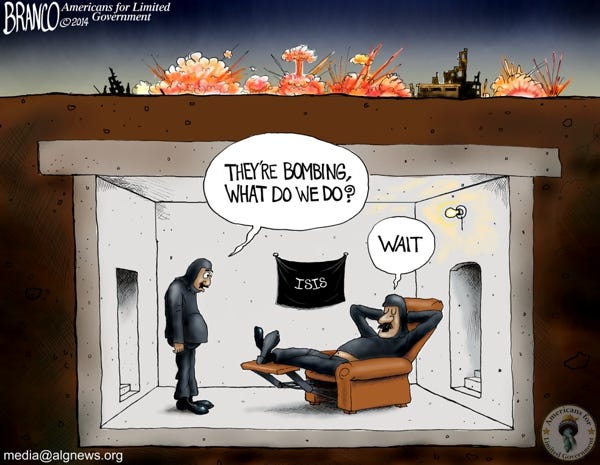
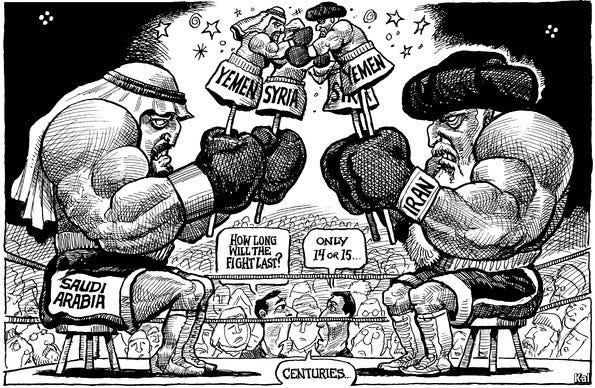
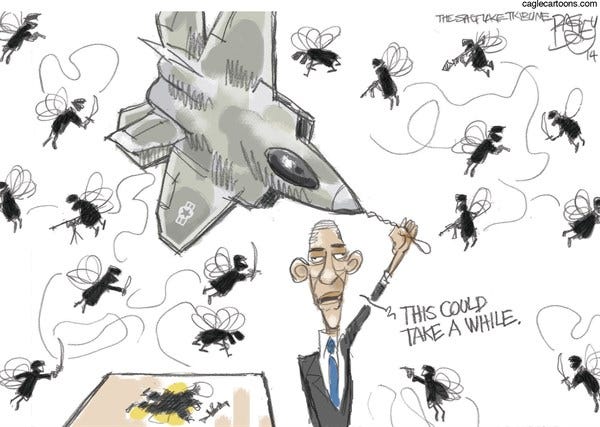
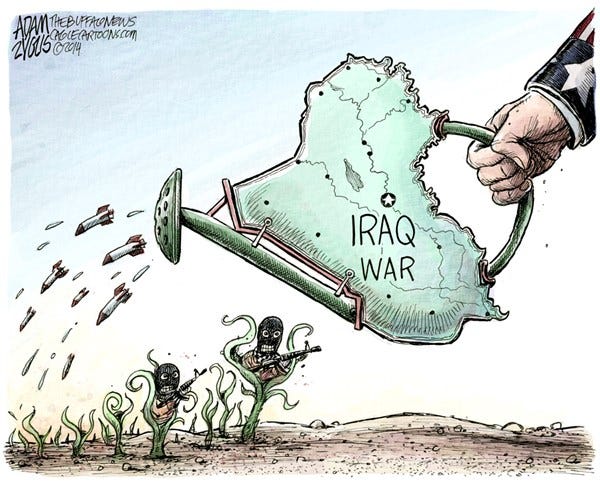
No comments:
Post a Comment
Thanks for commenting. Your comments are needed for helping to improve the discussion.